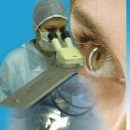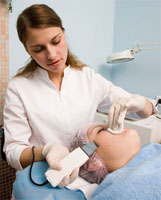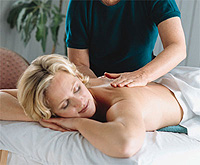When manual therapy is needed? Whether manual therapy helps for diseases of the internal organs? Answers to the questions you will find in the article.
Content
When manual therapy is needed
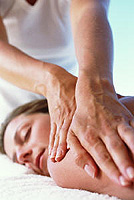 Only a special qualification doctor confirmed by a certificate has the right to use manual impact techniques. There are a few such specialists, since our medical universities began to prepare them a little over ten years ago. Interestingly, many doctors, first of all neurologists and orthopedists, realizing the enormous possibilities of manual therapy, also mastered her techniques, expanding their medical «repertoire».
Only a special qualification doctor confirmed by a certificate has the right to use manual impact techniques. There are a few such specialists, since our medical universities began to prepare them a little over ten years ago. Interestingly, many doctors, first of all neurologists and orthopedists, realizing the enormous possibilities of manual therapy, also mastered her techniques, expanding their medical «repertoire».
Treatment by the movement of those organs that can move - so roughly you can determine the scope of application of manual therapy. In fact, any disorders of biomechanics of the musculoskeletal system, responding with pain in the most unexpected places, should lead you to a manual therapist. Unfortunately, not always a neuropathologist, faced with such ailicious, recommends contacting followers of chiropractors.
«Doctor will use the vertebrae and put everything in place». Such a phrase of nonprofessionals usually determine the actions of the manual therapist. In fact, he does not put anything in place, but only restores the motorcycles of a particular joint or vertebra and a musculoskeletal system as a whole. The result of a qualitatively conducted treatment may be preserved for a long time - provided that the person has a physically active lifestyle, without serious overload.
Hypodynamia, monotonous postures - all this makes each of us a potential customer of the manual therapist. By the way, imperceptible failures in the system responsible for the mobility of our body occur every day. The body either copes with these troubles as they do, or accumulates «Resource of disadvantage». More serious disorders can manifest itself to relentless headaches, unpleasant feelings in the lower back, under the blade or in the chest. Sometimes to remove unpleasant symptoms, it is enough to change the posture, make several exercise.
Professional treatment movement makes sense if at least one of the following symptoms will be found:
- Pain in the back, joints or muscles arising after exercise
- Restriction of the mobility of the spine, chest, joints
- Scoliosis (spinal curvature) and other posture problems
- Headache, vascular dystonia, brainwater failure, associated with the pathology of the cervical spine
- Disorders of the functions of internal organs, vessels
So that the doctor knows exactly what and how to work, can be needed radiographs with so-called functional tests. The snapshot is done at the time of bending, extension, tilt.
X-ray, or magnetic resonance, tomography is used to detect hernia of intervertebral discs, spinal circulation disorders. It is also resorted to check whether there are no spine tumors or spinal cord.
To diagnose joint diseases, such as polyarthritis or diseases of Bekhtereva, laboratory survey methods are suitable. In general, one of the best methods for estimating biomechanical parameters of the body is a computer-optical topography. It can create a body relief map, calculating with a graphic and mathematical analysis of deviations from the norm.
In manual therapy, their own, special diagnostic methods - functional motor tests. Simple, but extremely informative, they help the doctor planning and dispening each manipulation and course of treatment in general.
Treatment of manual therapy of diseases of internal organs
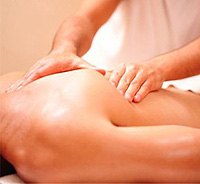 The treatment of the movement conducted in all the rules has a beneficial effect on the work of the nervous system (the work of blood vessels), the gastrointestinal tract, the glands of internal and external secretion, bronchi and other organs depends on it. Methods of direct impact on the abdominal organs are developed, while it is still, the truth, not supported by leading scientific schools of manual therapy.
The treatment of the movement conducted in all the rules has a beneficial effect on the work of the nervous system (the work of blood vessels), the gastrointestinal tract, the glands of internal and external secretion, bronchi and other organs depends on it. Methods of direct impact on the abdominal organs are developed, while it is still, the truth, not supported by leading scientific schools of manual therapy.
The treatment of the movement conducted in all the rules has a beneficial effect on the work of the nervous system (the work of blood vessels), the gastrointestinal tract, the glands of internal and external secretion, bronchi and other organs depends on it. Methods of direct impact on the abdominal organs are developed, while it is still, the truth, not supported by leading scientific schools of manual therapy.
- Heavy Diseases of Internal Organs
- Tuberculosis, other infectious spinal lesions or joints
- Oncological diseases
- Bekhtereva's disease
- Anomalies of the structure of the vertebrae, bones, joints
- Pronounced osteoporosis (bone fragility associated with calcium deficiency)
- Motor failure of vertebral motor segments, joints (effects of injuries or diseases)
I must say that the techniques of manual impact differ from each other. Moreover, there are differences between representatives of individual scientific schools - for example, between supporters of soft and more hard techniques of treatment.
However, regardless of school, the professional adheres to the following principles:
- First, it determines the testimony and contraindications to the manual effects for each patient.
- Next, diagnostic research is carried out, helping to choose a treatment technique, course duration and procedure dosage.
- Making a manipulation, the doctor always makes it consciously, given all the features of therapy, depending on the situation.
- Manual therapy does not exclude other types of treatment.
A competent doctor usually uses the whole «Palitroy» manual methods, applying each of them for the benefit of the patient. Knowing dozens of different ways of impact on the spine, joints and articulations of bones, muscles and ligaments, the real professional applies a composition of the most appropriate.
Like any method, it is subordinate to the fundamental principle «Do no harm». So do not risk, addressing help to healers who do not have a diploma.

